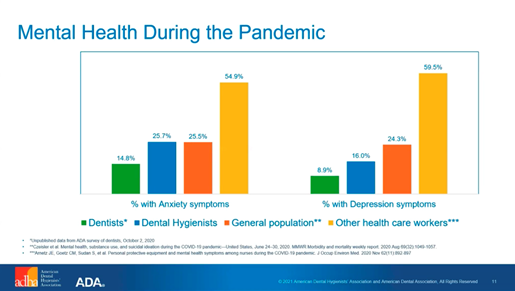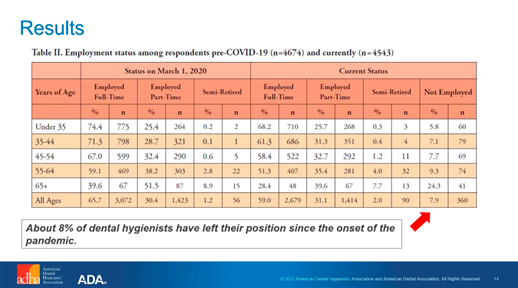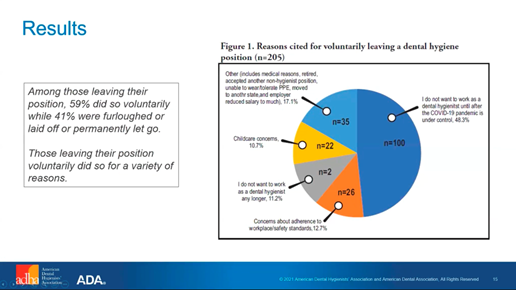
The dental sphere has without a doubt been greatly impacted by COVID-19. Due to the fear of transmission by aerosols, dentists and dental hygienists are considered to be more at risk professions. The risk has led to an increase in safety protocols, which previously hindered dental offices who were struggling to keep business afloat. This has resulted in a few critical issues facing dental professionals and dental hygienists in particular amid the pandemic.

With the new need to enhance infection prevention and control strategy, dental practices must adapt to patient needs. 99.1% of practices have implemented at least one new strategy to meet this goal. Despite the increase in safety rules, dental hygienists were reporting 3.1% of positive COVID-19 cases compared to dentists (2.0%) or the general population (2.1%). This demonstrates that dental hygienists seemed to be slightly more at risk of infection.
While considering mental health during the pandemic, increased rates of both anxiety and depression are being widely experienced. Anxiety was more prevalent than depression in dental hygienists, although neither result is as high compared to the general population or other health care workers. But it is important to note that negative mental health reports seem to be slightly higher among dental hygienists than dentists.

Employment patterns of dental hygienists are also shifting due to COVID-19. While comparing the status of hygienists on March 1, 2020, to the current status, 8% of them have left their position. Some interesting factors come to light while reviewing the data more closely, such as the big disparities in age group due and younger employees being less likely to leave the workforce. Overall, hygienists had the biggest effect on employment among dental professionals.

The majority of dental hygienists, 59% to be exact, left the workforce voluntarily. One of the biggest reasons for this was the assumption that they would return once the COVID-19 pandemic was more under control—but until then they did not feel comfortable working as a dental hygienist. Medical reasons also played a significant factor due to increased fear among certain individuals who are more susceptible to the virus. Being unable to tolerate new PPE standards, moving to another state, reductions in salary and childcare concerns are a variety of other reasons that led to hygienists leaving their positions.
It is unsure if these trends will persist among dental hygienists due to the uncertainty surrounding COVID-19. The ADA predicts that about 0.5% of hygienists may be permanently lost due to the pandemic. Thankfully, it seems as though the vast majority are simply temporarily waiting for it to be safer to return. Infection control continues to be at the forefront of dental professionals’ minds in order to keep employees and patients safe. Patients should not be wary of receiving oral healthcare due to this dedication to safety and consideration for the extreme precautions being taken in all dental settings.

